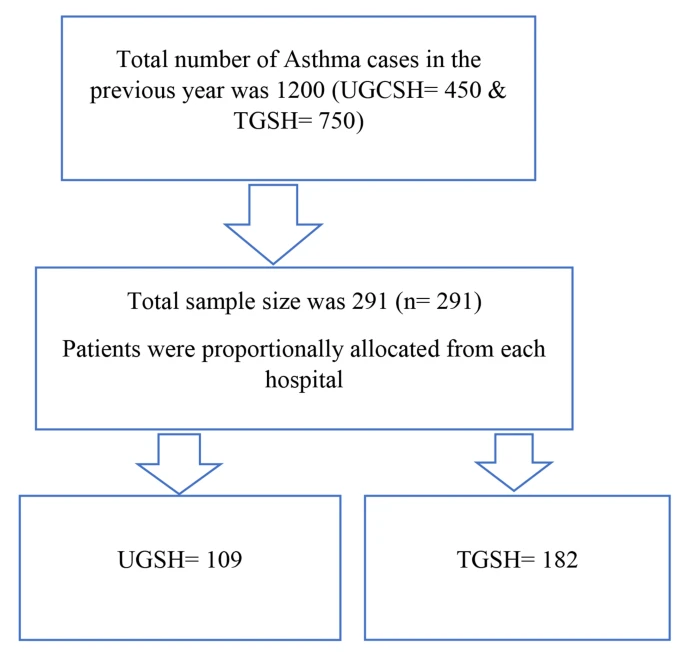Yenealem Solomon, Birhanemaskal Malkamu, Ayenew Berhan,
Tahir Eyayu, Andargachew Almaw, Biruk Legese & Berhanu Woldu
BMC Pulmonary Medicine volume 23, Article number: 96 (2023)
Abstract
Background
Asthma is a diverse disease with various etiologic bases. Severe asthma can be associated with increased mortality, hospitalization, and decreased quality of life for asthma patients. High blood eosinophil counts were associated with severe asthma, but recent studies have failed to confirm this as a marker of severe asthma among adult asthma patients. As a result, the purpose of this study was to determine the association between the severity of asthma and high blood eosinophil count.
Methodology
A simple random sampling technique was used to select 291 asthmatic patients for an institution-based cross-sectional study. Socio-demographic, behavioral, and clinical characteristics were collected by using a pre-tested structured questionnaire. Four milliliters of venous blood were collected from asthmatic patients for complete blood count and peripheral morphology assessment. The eosinophil count was analyzed by the Unicel DxH 800 (Beckman Coulter, Ireland) analyzer. A statistical package for social science version 20 (SPSS) software was used to analyze the data. The non-parametric (Mann-Whitney U) test was used to compare the eosinophil count with different background variables. A binary logistic regression analysis was used to assess the factors associated with eosinophilia. A p-value less than 0.05 in multivariable logistic regression analysis was considered statistically significant.
Result

In this study, the overall magnitude of eosinophilia was 19.6% (95% CI = 14.8–24.1). Being admitted to the emergency department (AOR = 0.25; 95% CI: 0.09–0.69, p = 0.007) and being female (AOR = 0.49; 95% CI: 0.26–0.9, p = 0.025) were shown to have a statistically significant association with eosinophilia. Moreover, the absolute eosinophil count was significantly higher among asthmatic patients infected with intestinal parasitic infection (p < 0.045).
Conclusion
Being female and admission to the emergency department were negatively associated with eosinophilia. Lack of eosinophilia can be related to the low-T2 asthma phenotype. The absolute eosinophil counts were higher among intestinal parasite-infected patients. Therefore, different biomarkers will be considered for the proper diagnosis and management of adult asthma patients.
